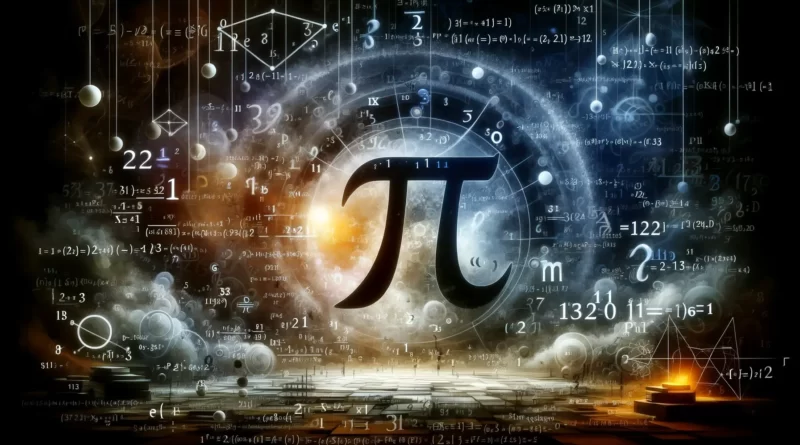What’s the Deal with Pi123? Hunting Down the Origins
Lovers of mathematics, inquisitive minds, and serendipitous internet wanderers! In this post, we dive into the intriguing world of numbers with a focus on an unusual one: pi123.
You may wonder, “Is this related to the famous Pi, the 3.14?” Far from it! We are delving into a much more unique and less known aspect of numerical mysteries.
Table of Contents
What’s the Deal with Pi123?
Okay, let’s set the stage. Everyone knows about Pi (π), the cool number that’s all about circles. It’s approximately 3.14, but its decimal goes on forever, without repeating.
Mathematicians call it “irrational” because it can’t be expressed as a simple fraction, and because it doesn’t make sense to them why it refuses to end (just kidding about the second reason).
Now, pi123 isn’t your usual suspect. It’s like someone took Pi and gave it a twist, adding “123” to make it… well, we don’t know yet. Here’s where things get exciting (and a bit confusing).
Pi123 isn’t a number you’d find in traditional math textbooks or when you’re measuring circles in geometry class. It’s out of the norm, kinda like that mysterious house at the end of the street kids dare each other to knock on during Halloween.
Hunting Down the Origins! The Birth of Pi123
So, where did pi123 come from? Who woke up one morning and decided, “Hey, Pi is cool and all, but you know what’s cooler? Pi123!”?
The truth is, there isn’t much historical backing to pi123. It’s like a piece of abstract art; you try to figure out what’s going on, but all you see are splashes of paint until someone guides you through it.
From what we’ve gathered, pi123 isn’t a concept taken from ancient scrolls or modern math theories. It sounds like someone might have come up with it during a brainstorming session or a very confusing math dream. But that’s what makes it intriguing – it’s a puzzle, and we’re here to put the pieces together!
What Could pi123 Possibly Mean?
Let’s don our detective hats and delve into the nitty-gritty. If Sherlock Holmes were here, he’d say, “Elementary, my dear reader!” But, is it, though? Is it really elementary, Sherlock? Here are a few theories:
Theory 1: A Mathematical Fusion? Could pi123 be a funky fusion of Pi (π) and the numbers 1, 2, and 3? If so, what does that mean? Are we adding them, multiplying, dividing? It’s like deciding on toppings for your pizza – there are combos that work and others that make people question your life choices.
Let’s say we add them.
Pi + 1 + 2 + 3 equals approximately 9.14. Okay, interesting, we’ve got a number. But what’s special about it? Does it help us understand the universe, or is it the number of pizza slices I can eat in one sitting? The world may never know.
Theory 2: A Secret Code? Perhaps pi123 is a code, a sequence of sorts. Imagine it representing a unique formula or algorithm, like those secret codes in spy movies.
What if it unlocks a math mystery that’s been baffling minds for centuries? Or maybe it’s the Wi-Fi password at a super nerdy coffee shop. Who’s to say?
Theory 3: A Casual Nickname for a Complex Concept? You know how scientists love naming things – there’s a black hole called ‘Powehi,’ which sounds pretty cool.
So, pi123 might be a casual nickname for a super complicated mathematical concept. It could be something mathematicians chat about over coffee, or a pet project they’ve thrown around during a conference.
Pi123 in Popular Culture
Alright, let’s talk about the elephant in the room. Even though pi123 isn’t a mainstream concept, it’s gaining traction, sort of like a cult classic that everyone starts talking about years after its release.
The Internet’s Playground: Memes, social media posts, cryptic tweets – you name it. Some folks online are having a field day with pi123.
They’re creating hilarious content, making wild guesses, and sharing left-field theories that would make conspiracy theorists proud.
Edu-tainment: Believe it or not, pi123 is making its way into educational content. Some teachers and professors, known for their eccentricity, have started throwing pi123 into problems and examples.
Why? To keep students on their toes and make them question everything they know about math!
Nerd Culture: You thought comic con was the epitome of geekiness? Enter pi123. It’s becoming a buzzword, a secret handshake for the mathematically inclined. If you know, you know.
Embracing the Mystery
At the end of the day, pi123 is a wild card. It defies explanation (for now), and that’s what’s so captivating about it. In a world where we’re used to finding answers at the click of a button, pi123 challenges us to think outside the box, to embrace the enigma.
It’s a reminder that not everything has to make sense. Sometimes, it’s the journey of exploring, questioning, and theorizing that brings excitement into our lives (and gives us something to ponder over when we’re trying to ignore the pile of dishes in the sink).
The Legend of pi123 Continues…
The curious case of pi123. Is it a number, a theory, a mathematical inside joke, or something else entirely? Until the math wizards of our time come forward with explanations, all we can do is speculate and enjoy the mystery.
But hey, that’s the beauty of learning and exploring, isn’t it? It’s not just about the answers, but also about the questions that keep us searching.
Until next time, keep pondering the mysteries of the universe, and remember, math doesn’t have to be mundane – sometimes, it’s as mysterious as the dark side of the moon.
FAQs About Pi123
“Is pi123 a real number that I missed in math class?”
Oh, we feel the confusion! No, you didn’t miss anything in math class, at least not when it comes to pi123. It’s not a “real number” in the sense of something you’d use in calculations or find on a number line.
Think of pi123 more as a concept or a mystery that’s sparked curiosity across the internet. It’s like a riddle wrapped in an enigma, tucked inside a math problem!
“Can I use pi123 in my math homework or exams?”
Imagine the look on your teacher’s face if you did! While that would be a bold move, pi123 isn’t officially recognized in any academic syllabus (as of now, who knows what the future holds!).
It’s more of a curiosity and a testament to human imagination than a principle you can apply like Pythagoras’s theorem. So, it’s probably best to stick to the tried-and-true formulas you’ve learned in class when doing homework or sitting for exams. Keep pi123 as that cool concept you debate with friends during a study break!
“Has any famous mathematician spoken about pi123?”
As intriguing as pi123 is, it hasn’t made its way into the hall of fame where renowned mathematicians dwell. It’s kind of an underground sensation, the indie band of the math world if you will.
It hasn’t hit the mainstream circuits, and no famous mathematician has come forward to claim or discuss it. But who knows? Sometimes it takes a while for these things to catch on. Maybe in a few years, we’ll see it featured in TED Talks or academic journals!
“If pi123 isn’t a traditional concept, why are people interested in it?”
That’s the beauty of human curiosity! People love a good mystery, and pi123 offers just that. It’s the allure of the unknown, the challenge that comes with something unexplained.
This concept gives folks a chance to speculate, imagine, and have a bit of fun. In a world where most things are defined and categorized, a little mystery goes a long way in sparking excitement and debate. It’s like having an unsolved case that both amateur and pro detectives can’t help but explore!
“Where can I learn more about pi123 if I’m super curious?”
Given that pi123 isn’t a standard math concept, there aren’t textbooks or college courses dedicated to studying it. However, the internet is a treasure trove of speculation and information!
Online forums, social media platforms, and perhaps math-related chat rooms might be your best bet. These platforms could have discussions, theories, and maybe even some humorous takes on what pi123 could represent. Just remember to take everything with a grain of salt and enjoy the ride on the speculation train!




